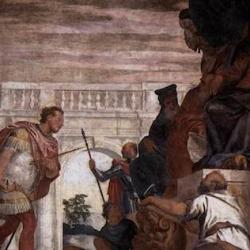Klaus Wengst argues that the harlot city of Revelation can “only” be Rome (contribution to Politics and Theopolitics in the Bible and Postbiblical Literature, 191). He follows with all sorts of good reasons to doubt that conclusion.
For starters, he point out the odd doubling: The beast on which the harlot rides is definitely Rome, so what are we to make of Rome riding on the back of Rome. “Can both things be understood in context with one another?”
He tries to rescue his interpretation by saying that the beast represents Rome’s “irresistible military might” and the whore represents “faithlessness toward God” (192), and particularly the commercial temptation of Roman wealth (193). But to get there, he cites a number of passages that identify Jerusalem as the faithless harlot city (Isaiah 1:21, 23; Ezekiel 16, 23). He is able to cite Nineveh’s harlotry (Nahum 3:4), but that doesn’t really count either, since Nineveh first makes an appearance in prophecy as a repentant city (Jonah 3-4).
The nations drink the cup of the harlot’s fornications, and Wengst says, “This system, which is clearly prosperous, impresses everyone, and everyone is more than willing to be impressed. The entire world is, as it were, drunk on the religiously ornamented might of the metropolis and, according to the pseudo-realistic evaluation, considers it to be the reality which determines all things. Everybody goes along with it as a partisan and as a prisoner of the system” (193-4). But that sounds a lot like a restatement of the problem: The harlot represents dressed-up Roman power, still riding on bestial Roman power.
When the replacement city descends from heaven, it is explicitly named “Jerusalem.” Is that a new Rome?
Wengst arguments flounder. Much better to distinguish: Harlot city on beast represents two powers, the power of religious seduction and the power of destruction, Jerusalem and Rome.










